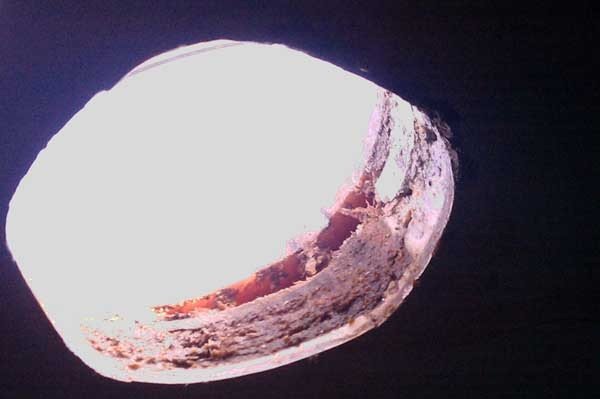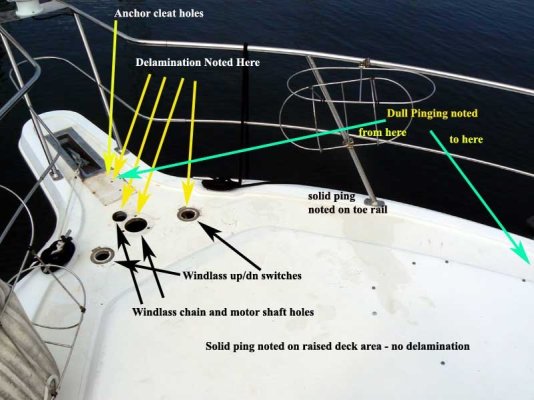Timjet, I'd think twice about drilling from below. Think about it. You have damp core, but at present it's trapped between a sandwich of waterproof fibreglass layers above and below. Disrupt that with holes and you have the potential for leaks that were not there before. After all, if the damp core remains just that, a damp core - sealed top and bottom by glass, why bother doing anything at all unless the integrity of the laminates above or below is compromised, (which is what your drill holes would do). It is probably still contributing some stiffness to the deck, but if it's too springy, then one might be better off, after removing old teak - the usual cause of this damp core, and then laying down a stiffener, then glassing over. How do I know? Because the decks of my boat had leaked and gone soft here and there, and the previous owner, not wanting to spend a $quillion, had the above done. I would have been a bit worried too, but even now, 15 yrs later, the decks done like that are fine. No damp comes through, and apart from the fact I know there is a layer of damp core in under there because I have drilled out holes for deck waste outlets and water-in fillers, and can see the two separate layers, sandwiched, one damp, and the top one still nice and dry, I would never know otherwise. It comes back to the old adage, "if it ain't broke".....well, at least don't over-fix it....is all I'm saying.....




